Woljeongri Beach (월정리해변(월정리해수욕장))
7.6Km 30958 2023-01-17
480-1, Haemajihaean-ro, Jeju-si, Jeju-do
+82-64-740-6000
Woljeong-ri, a village located on the east side of Jeju Island, holds the meaning "the moon stays." The beautiful emerald sea spreads out like a picture, and the bright moon shines above it. As more and more travelers visited the beach to appreciate its beauty, many restaurants, cafes, and lodging facilities started to form along the shoreline. Some cafes placed chairs for people to relax in while looking at the sea, which became an iconic photo spot of Woljeongri Beach.
The beach is also a popular location for a variety of water sports such as surfing, snorkeling, and kayaking. Woljeongri Beach is popular among surfers because it has waves with a uniform x_height that are constantly coming in. The beach is also a part of the Gimnyeong-Hado Olle and Gimnyeong-Woljeong Geotrail Course on Jeju Olle Trail Route 20, and a great spot for tourists to take a break while taking in the beautiful scenery and cool scent of the sea.
Dangcheomuldonggul Cave [UNESCO World Natural Heritage Site] (당처물동굴 [유네스코 세계자연유산])
8.1Km 20850 2020-04-23
Woljeong-ri, Gujwa-eup, Jeju-si, Jeju-do
+82-1600-0064
Dangcheomuldonggul Cave, located in Jeju, is a lava tube estimated to have been formed some 320,000 years ago due to volcanic activity; it is located approximately 3 kilometers underground. With no entrance as such, the cave is not open to the general public and thus its original form remains preserved to this day, giving it a high geological value.
Although the Dangcheomuldonggul Cave is technically a lava tube, it resembles a limestone cave due to the secondary geological formations
of lime substances that have accumulated in the ground above the tube. The tunnel has a spectacular and mystical beauty with countless stalactites and stalagmites, as well as stalactite columns. The particularly thin stalactites and stalactic columns in this cave are well-known for their uniqueness and beauty. Although this is a relatively small lava tunnel, its exotic colors and the richness of the secondary topological formations make it extraordinary in terms of research value. This cave has been designated natural monument.
* The UNESCO World Heritage inscribed Geomun Oreum Lava Tube System consists of Bengdwigul, Manjanggul Cave, Gimnyeonggul, Yongcheondonggul and Dangcheomuldonggul Caves.
Byeolbangjin Fortress (별방진)
8.1Km 5080 2024-03-06
Hado-ri, Gujwa-eup, Jeju-si, Jeju-do
+82-64-710-3314
Byeolbangjin Fortress was designated as a Jeju Monument on April 3, 1973. The fortress is about 950 meters in circumference. The oval fortress was built in consideration of the location's topography having a higher terrain in the southern part and a lower terrain in the northern part. Of all the fortresses in Jeju, Byeolbangjin Fortress is in relatively good shape. The fortress is also an important example of how fortresses in Jeju were built and in what scale.
East Forest (이스트포레스트)
8.2Km 0 2024-02-20
26-1 Jongdal-ro 1-gil, Gujwa-eup, Jeju-si, Jeju-do
East Forest is a pasta restaurant in Jeju, known for its pleasant ambiance. Its signature dish is muneo cream pasta (octopus cream pasta). The menu also features other delectable options like jeonbok buttergui risotto (butter-grilled abalone risotto) and haesanmul nurungji tomato pasta (seafood scorched rice tomato pasta). With its stylish interior and tasty offerings, the restaurant has become a favorite among both locals and tourists. Nearby attractions include Hado Beach and Seongsan Ilchulbong Peak.
Around Follie (어라운드폴리)
8.3Km 0 2024-06-05
433 Seoseongil-ro, Seongsan-eup, Seogwipo-si, Jeju-do
Around Follie is a hotel-slash-campground located in Seogwipo-si, Jeju. The campground provides all the camping equipment needed for as few as one person to a whole family of campers, so everyone can enjoy camping with ease.
Bengdwigul Cave [UNESCO World Natural Heritage Site] (제주 선흘리 벵뒤굴 [유네스코 세계자연유산])
8.7Km 21617 2022-12-27
Jocheon-eup, Jeju-si, Jeju-do
+82-1600-0064
With a total length of 4,481 meters, Bengdwigul Cave is shaped like a maze and has one of the most complex lava tube structures in the world. For geologists, this cave is invaluable since it demonstrates how lava continuously flowed over the surface of the ground and the complex route it took to eventually form a tube deep underground. Created particularly close to the earth’s surface, this cave has a number of entrance holes to the tunnel. Inside, the complex structure of the cave unfolds in the form of double-tiered or triple-tiered rooms. A range of lava formations such as lava columns and lava bridges have developed inside this mystical tube.
* The UNESCO World Heritage designated Geomunoreum Lava Tube System of Bengdwigul, Manjanggul Cave, Gimnyeonggul, Yongcheondonggul and Dangcheomuldonggul Caves.
Geomunoreum Lava Tube [UNESCO World Natural Heritage Site] (거문오름 [유네스코 세계자연유산])
8.9Km 54870 2024-03-13
Seonheul-ri, Jocheon-eup, and Deokcheon-ri, Gujwa-eup areas in Jeju
+82-64-710-8981
Geomunoreum Lava Tube stands out as one of the distinct oreum (the Jeju language term for parasitic cones) on Jeju Island, marked by its extensive network of around 20 lava tubes running through the volcanic structure. This site is not only a geological marvel but also a sanctuary for diverse biological species. Visitors begin their journey at the Jeju World Natural Heritage Center, from where a path leads directly to the Geomunoreum Lava Tube. It is important to note that prior reservations are required to visit. The significance of this location as a key geological feature was recognized when it was designated as a UNESCO World Natural Heritage Site in 2007. Additionally, an international trekking event is hosted annually to celebrate its global importance.
Jeju World Natural Heritage Center (제주 세계자연유산센터)
8.9Km 25386 2021-05-31
569-36, Seongyo-ro, Jeju-si, Jeju-do
+82-1800-2002
The Jeju World Natural Heritage Center was established to acknowledge Jeju Island’s value as the sole UNESCO World Natural Heritage in Korea. It is comprised of various facilities including a 4D video room, lava tunnel experience, origins of Jeju-do, and many other activities that visitors can experience first-hand. Jeju World Natural Heritage Center is located in the Geomunoreum Lava Tube System, which was designated as a UNESCO World Natural Heritage in 2007, one of the 20 ecological tourism spots selected by the Ministry of Environment of Korea in 2009, as well as a Korean-style ecological tourism model.
* Opening date: September 4, 2012
Gimnyeong Seongsegihaebyeon Beach (김녕성세기해변 (김녕해수욕장))
8.9Km 31418 2024-07-22
237 Gujwahaean-ro, Jeju-si, Jeju-do
The clear waters that are highlighted with cobalt-blue and the clean white sand of Gimnyeong Seongsegihaebyeon Beach steal the hearts of visitors every year. The beach is also popular with fishermen, who enjoy rope fishing from the rocks. This area is known to be good for catching striped beakfish and spotty belly greenlings. Not far from the beach is Manjanggul Cave, which offers a welcome escape from the daytime heat.
Daheeyeon Garden (다희연)
9.0Km 29665 2019-12-20
117, Seongyo-ro, Jeju-si, Jeju-do
+82-64-782-0005
Daheeyeon Garden is a major tea farm on Jeju Island, which has the best conditions for growing great tea in a natural environment. Jeju has a year-round average temerature of 16℃ and nutrient-rich soil with plenty of water for the tea plants to grow well. The two cave cafes, Evergreen Luce Garden and Eve Hall, serve naturally fermented green tea bread, cookies, muffins, green tea latte and green tea juice.
Evergreen Luce outdoor garden was built inside a cave formed naturally by a volcanic eruption. Despite being in a cave, this outdoor garden has ponds, bridges, indigenous trees and flowers. Eve Hall is located through a hole in the cave ceiling and can be only reached after passing through a tunnel-like cave. The deepest part of Eve Hall is roughly 30 meters and is home to bats; if you are lucky, you might even see a few.

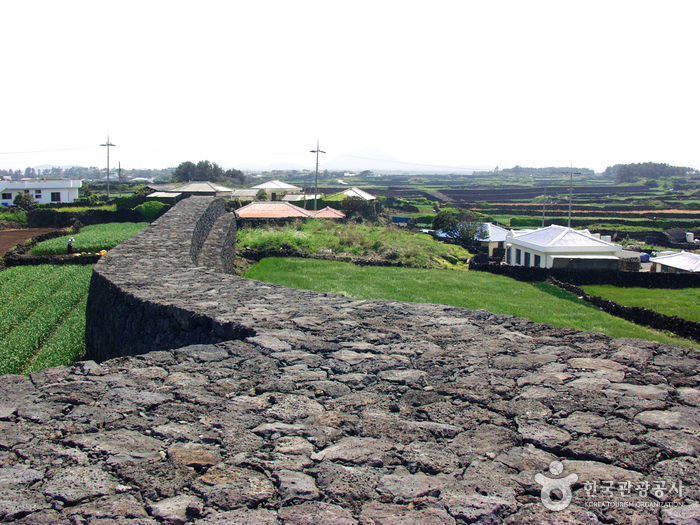
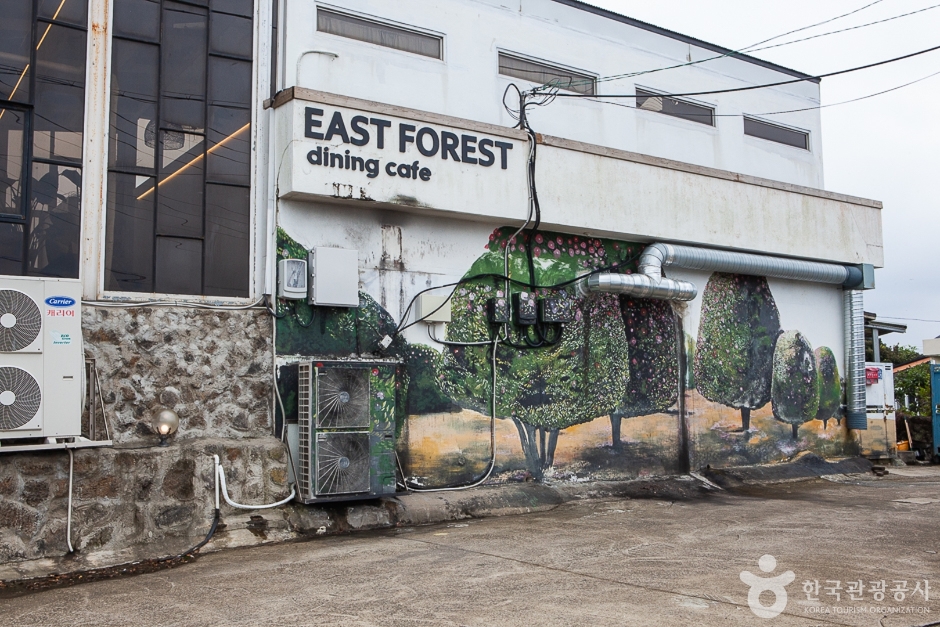
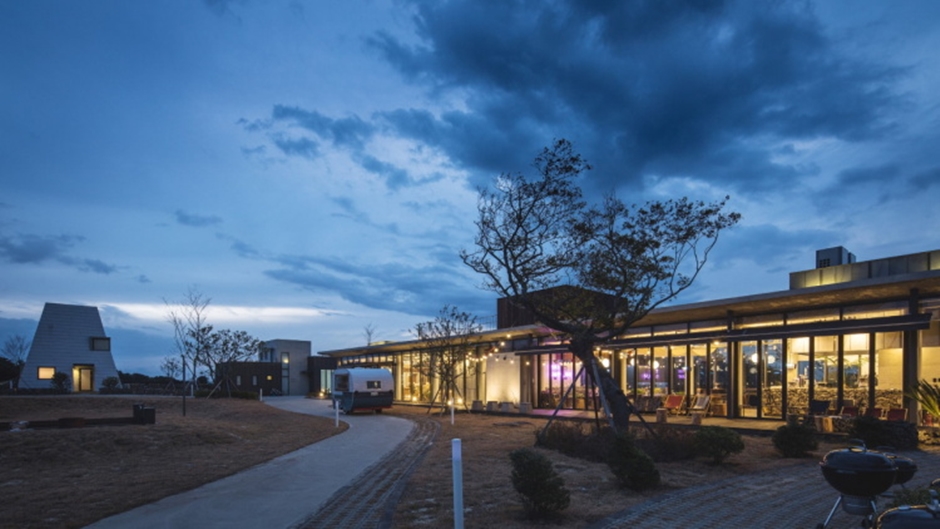
![Geomunoreum Lava Tube [UNESCO World Natural Heritage Site] (거문오름 [유네스코 세계자연유산])](http://tong.visitkorea.or.kr/cms/resource/62/2661662_image2_1.jpg)
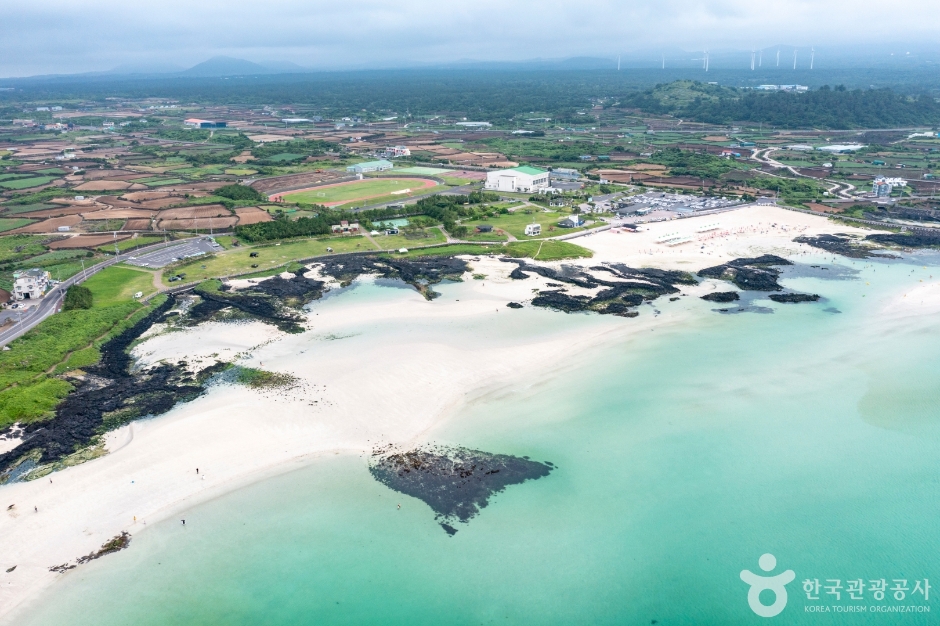
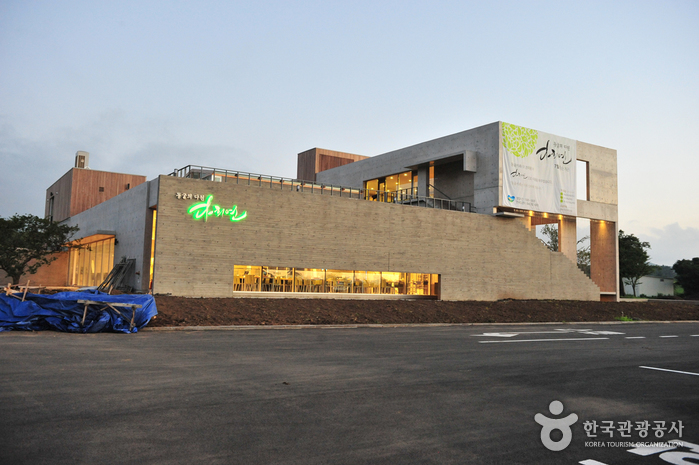
 English
English
 한국어
한국어 日本語
日本語 中文(简体)
中文(简体) Deutsch
Deutsch Français
Français Español
Español Русский
Русский